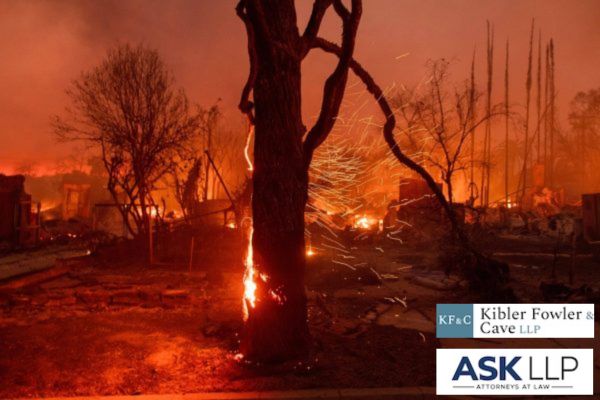The Sizzled Earth: Understanding the LA Wildfires and the California Tort Claims Act
May 07, 2025

The pungent smell of smoke, the eerie orange glow on the horizon, the frantic sirens in the distance – these have become too familiar for residents of Los Angeles County. While the beauty of the surrounding landscapes draws many to Southern California, the threat of wildfires looms large, a stark reminder of nature’s untamed power and the potential for devastating loss.
The recent surge in LA wildfires has once again brought the issue to the forefront of public consciousness. Fueled by dry conditions, high winds, and often, negligent governmental entities and utility companies, these blazes can spread with terrifying speed, consuming homes and businesses. The immediate aftermath involves not only battling the flames but also dealing with the immense human cost: displacement, injury, and the heartbreaking loss of loved ones and livelihoods.
The long road to recovery begins. This is where understanding the California Tort Claims Act becomes crucial for those who have suffered losses. When negligence or wrongdoing by a public entity is suspected as a contributing factor to the start or spread of a wildfire, the California Tort Claims Act comes into play.
The California Tort Claims Act
The California Tort Claims Act (CTCA) is a body of law that governs lawsuits against public entities in California, including the state, counties, and cities. This act outlines specific procedures and limitations for filing claims against these entities for damages caused by their actions or inactions.
Key Aspects of the CTCA to Understand:
- Strict Filing Deadlines: The CTCA has very strict deadlines for filing a claim. Generally, individuals must file a written claim with the public entity within six months of the incident causing the damage. Failing to meet this deadline can result in the claim being forever barred.
- Specific Claim Requirements: The claim itself must adhere to specific requirements, including providing detailed information about the incident, the damages incurred, and the amount of compensation sought.
- Governmental Immunity: It’s important to understand that CA law also provides certain immunities to public entities. This means that even if a public entity’s action contributed to the damage, they may be shielded from liability in certain circumstances.
- Legal Process: If the public entity denies the claim, individuals have a limited time to file a lawsuit in court.
Navigating the Claims Process
For individuals or entities considering filing a claim under the CTCA, it’s crucial to adhere to the procedures.The initial step involves submitting a written claim to the relevant governmental agency within six months of the incident. Failure to meet this deadline can result in the forfeiture of the right to sue. If the claim is denied or not acted upon within 45 days, the claimant may proceed with a lawsuit in superior court.
Dealing with the aftermath of a wildfire is a challenging task. Adding the complexities of the legal system, particularly the California Tort Claims Act, can feel overwhelming. Consulting with legal professionals experienced in wildfire liability and the CTCA is advisable. An attorney experienced in wildfire litigation and the CTCA can help you understand your rights, navigate the claims process, and ensure that you meet all deadlines and requirements.
Moving Forward
As the flames are extinguished and the smoke begins to clear, the long process of recovery will begin. For those who have suffered losses, understanding their rights and potential avenues for legal recourse is essential. The California Tort Claims Act provides a framework for seeking compensation from public entities in certain circumstances. However, due to its complexities and strict requirements, consulting with an attorney experienced in this area of law is highly recommended for anyone considering filing a claim related to the Los Angeles wildfires.
